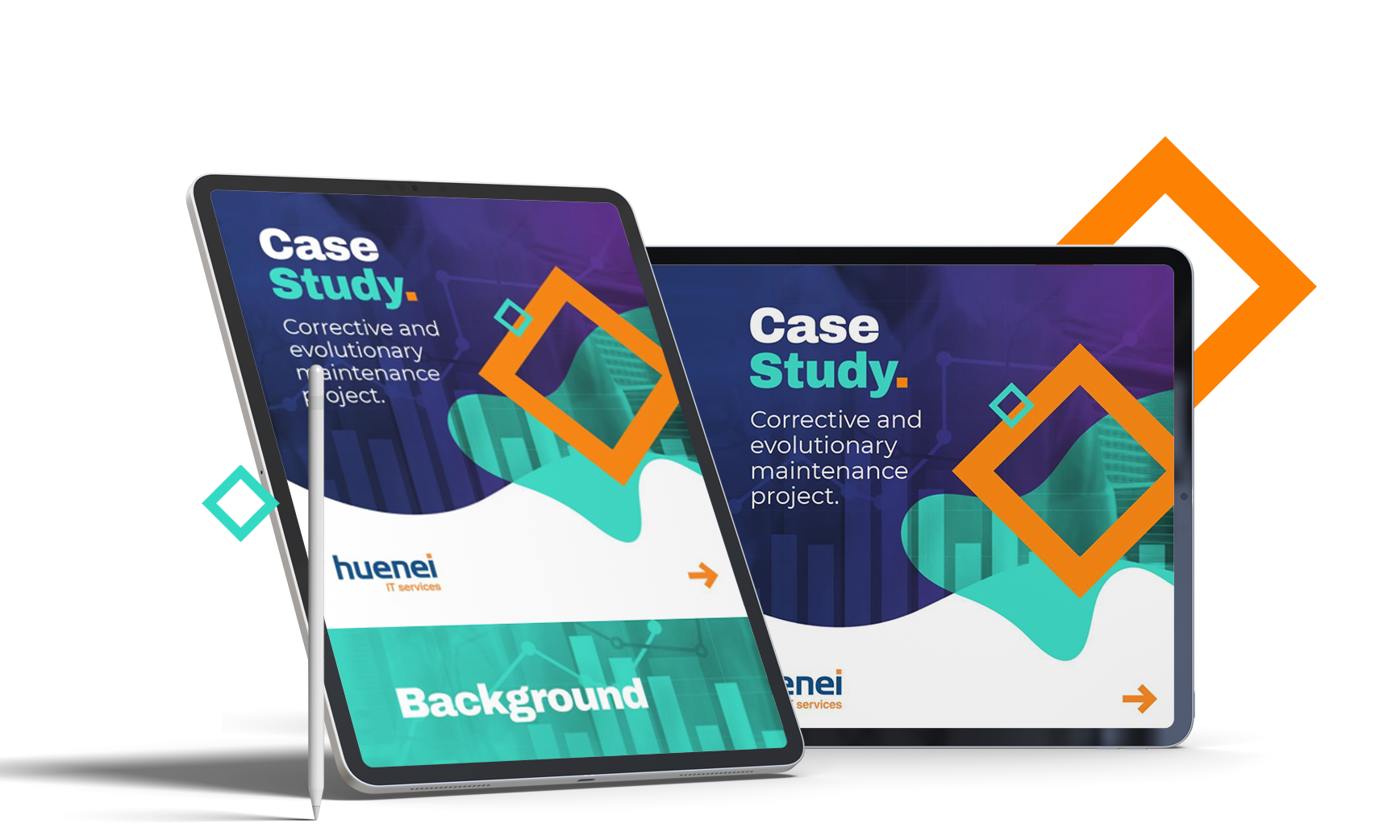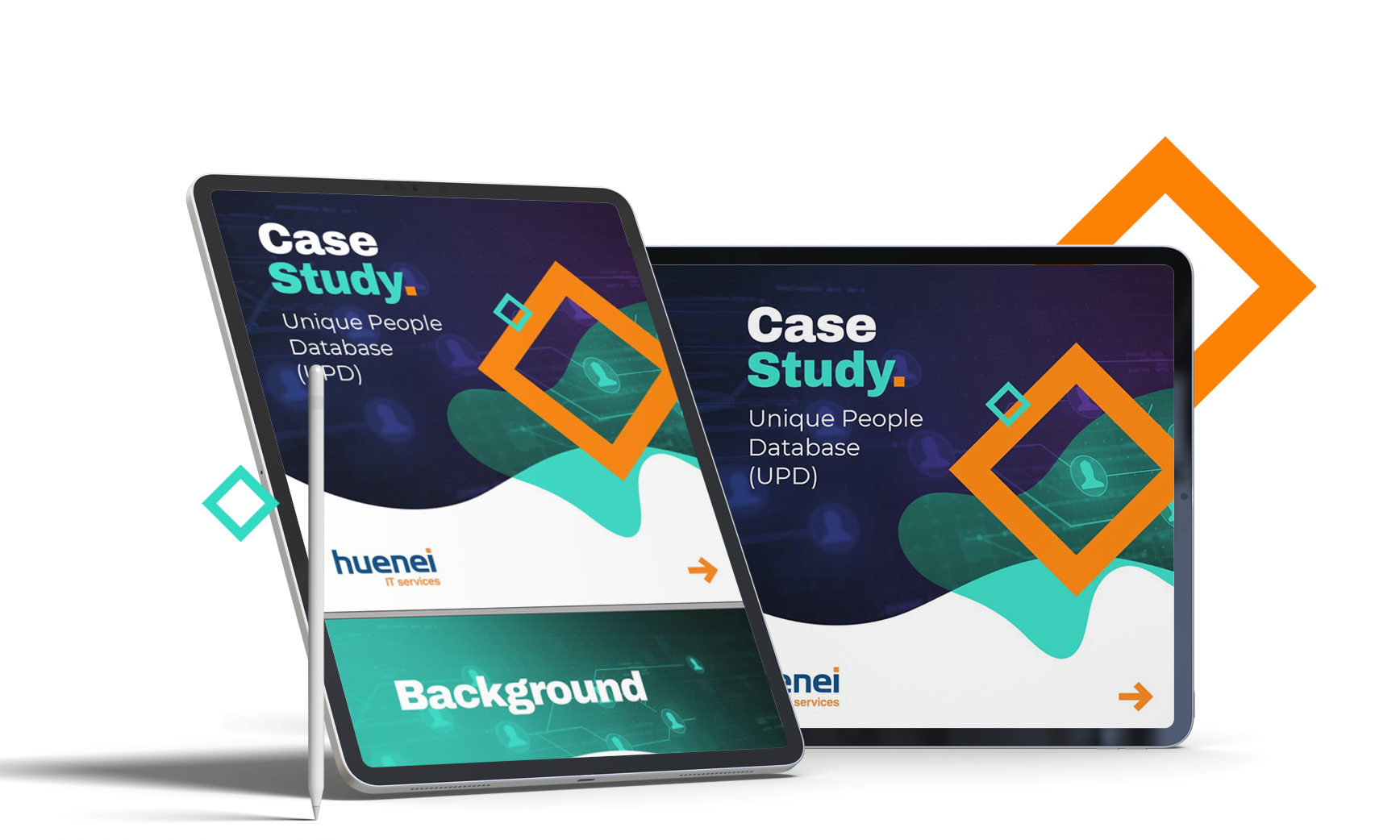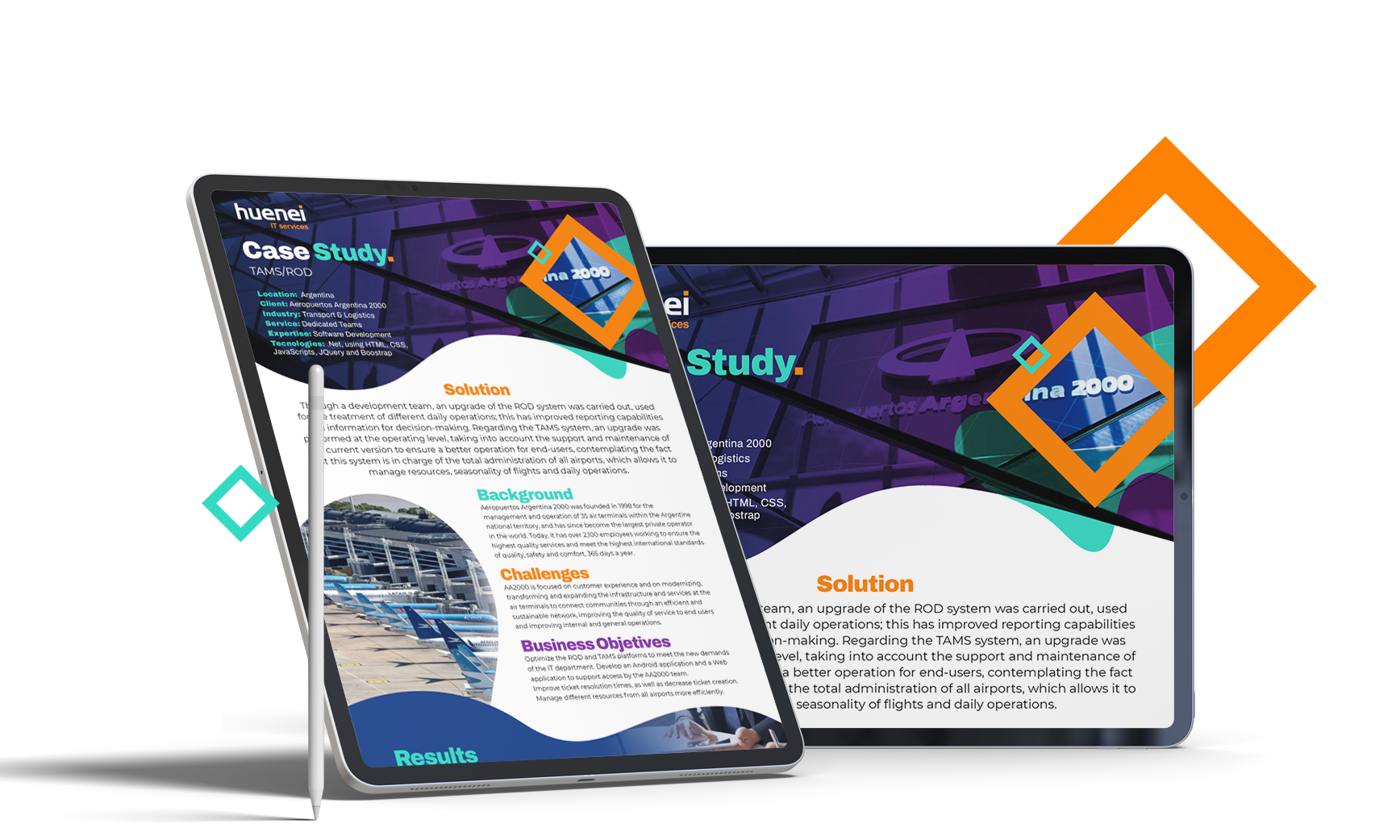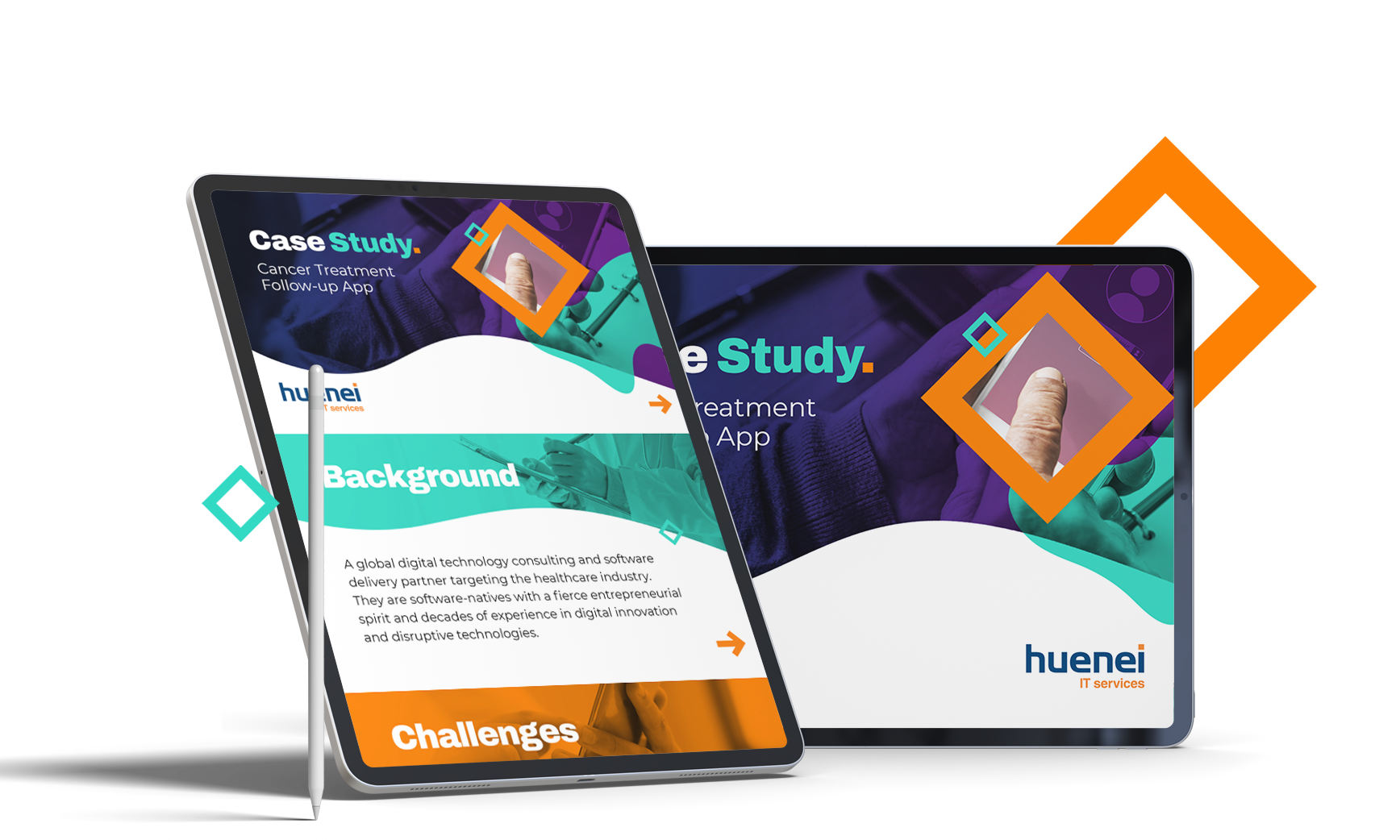
by Huenei IT Services | Mar 16, 2020 | Mobility
Faced with an increasingly competitive market, making updates and improvements has become a necessity for a large number of companies and companies. These improvements should not only be made quickly, they should also be focused on user experience, usability and information security, where their compatibility with other platforms is also checked.
Above all the CTOs and CIOS of mass-use companies such as e-commerces need to develop various applications in order to meet the needs of different market sectors, which in turn are compatible for different devices. Therefore, one of the main advantages of React Native lies in its usability in various platforms and mobile operating systems.
Is your app getting heavy for so many features? We invite you to read our entry “Do I need Microservices for my App?”, where we discuss how they can help keep it fast and smooth.
React is literally making all these processes much more efficient. This framework reduces the effort made by the work teams in half the time, as it offers the possibility of managing everything from this platform.
What is React Native? Why choose it?
React Native is one of the best open source systems designed for mobile application development. He uses Javascript to write mobile multiplatform applications designed for iOS and Android, based on declarative elements to create a mobile user interface.
Javascript is the most widely used programming language in the world, so React Native is perfect for beginners who need to learn faster and can develop applications without the need to include a new language.
For this framework there is only one native code, thanks to this it will be possible to develop various functionalities and innovations in innumerable types of projects. React Native is recognized for being the OpenSource of many developers, it means a point in favor of using this platform.
By choosing this framework you will have access to any feature that your project requires, in addition you will have the support of a large community that can provide you with a safe guide preventing your projects from being incomplete.
Main advantages of React Native
It can be developed on multiple platforms at the same time
At the time of developing an application, there are at least two OS options that can be chosen: iOS or Android for which it is necessary to learn Objective-C and Swift or Java and Kotlin respectively. Therefore, if your projects are based on developing an app for iOS or Android with React Native, all processes will be much more efficient.
Using Objective-C, Swift or Java it would be necessary to develop two separate applications from each other. With React Native more than 90% of the base code can be shared, which greatly reduces the time to market while maintaining the same quality standards.
It is especially favorable for front developers accustomed to React, since React Native uses the same components to create a mobile interface for users. Therefore, those who have developed mobile applications with React, find in React Native an easy to understand counterpart, also based on a Javascript framework.
It has the largest user community
Since it is the most recognized OpenSource, it is natural that many developers have access to all its features so you can count on the advice and guidance of this great community. In addition, React Native has native APIs ready for use, as well as many of the APIs that have been developed by the community itself.
Many users in communities like GitHub React or Chat Reactiflux offer their codes for free to use or modify according to your needs. Thanks to these codes, new solutions have been created, maximized efficiency during the development of a PPP or proposed new quality standards.
Perfect for mobile devices
React Native has an intuitive and modular interface that allows developers to learn more about someone else’s project and continue working on it if they wish. For development teams, this feature is one of its main advantages and the one that facilitates the process of creating updates for applications.
We invite you to read our blog post “React Native vs Flutter: A Battle of Giants“, where we compare both frameworks.
No problem if you want to use the native code
Using native codes such as Swift, Java or Objective-C combined with the React Native language, as well as creating complete applications in this framework will always be the developer’s decision, taking into account your preferences and the results you expect to obtain.
The idea of combining React Native with other programming languages can be beneficial when the developer must add third-party services to their application that may not be in their mother tongue. React Native allows you to use a programming technique known as “bridge” to make this possible.
It has very good references from large companies
Uber Eats, Facebook, AirBnB and even Instagram trusted React Native to achieve amazing results as we know. The large volume of users who visit these applications continuously was the key to be shown that React Native provides the best performance, maintenance and scalability so necessary for a good application.
All these applications are the example of how to implement this framework successfully. Therefore, if you want to create an application capable of receiving a very wide audience, this framework is an excellent option.
You can update the apps you are developing in real time
Updating changes in real time is another of the great advantages of this framework. Thanks to this feature it is possible to add innovative functions as well as correct errors in record time. For example: if you are developing a project and want to see the changes made immediately, you can keep two windows open. One that contains the code and another that shows the changes, in this way the development process becomes more agile and efficient.
It represents a significant saving in time and money
React Native allows you to use the same code in different OS, which translates into tremendous savings in development time and production cost. With this framework, development time has been reduced to more than half. And although the cost savings are not as significant, it can be convenient enough, depending on the investment you are making.
Conclusion
In the IT world there is an uncountable number of technologies, frameworks, methodologies, etc. Each has its own advantage and specific use, based on the specific needs of the business; Being React is just one more framework of this universe, and although it is highly effective, it will depend on the nature of the project what technology to use.
If you want to know what is most convenient for your project, we invite you to learn more in our Mobile Development section. You can also Send us a Message and an expert will contact you shortly.

by Huenei IT Services | Mar 2, 2020 | Process & Management
Remote work has become more of a necessity today than a trend, becoming more and more relevant when outsourcing the IT operation. Especially when it comes to finding highly trained talent and, above all, adapting to the company’s budget.
The main concern of some executives when subcontracting is not being able to control the group or mistakenly think that a good job, done responsibly, can only be carried out within their office or in the same State / Country.
Both models, both in situ and remotely, can work quite well efficiently and productively, provided you have the right tools and mentality.
Next, we will give you 6 valuable tips so you can manage your work team with greater confidence and assertiveness.
Take into account a culturally aligned partner who dominates the language and is in the same time zone:
Although the main objective of outsourcing a remote team is to reduce costs, it is necessary to take into account cultural affinity and language has a very important value, as they will ensure that the team can adapt quickly to the corporate culture of the company.
We invite you to read our article “How we find the best IT talent for your project“, where we talk in more details about our hiring process.
Working with partners in the same time zone allows them to be in sync and work remotely without any problems. Considering these three points (culture, time zone, language) will avoid possible delays, misunderstandings or clashes between team members.
We currently have a highly diverse and multidisciplinary work team, potentially increasing our adaptability, regardless of the origin or location of our clients.
Offer a complete scope of the project to increase the fidelity of the technology partner:
To ensure that the entire team follows the planned work schedule and that they are familiar with the project, three determining actions must be carried out:
- Provide constant training on work processes and methodology, both of the company and the industry.
- Loyalty with the new technology partner through programs of rapprochement and mutual knowledge.
- Maintain constant feedback in order to create better working relationships.
It is vital to allow ideas from both sides to flow on how to optimize team performance, improving work progress and making timely corrections, if necessary.
An important element that has helped keep our customer satisfaction index high is to offer wide visibility, allowing our clients to have real-time measurements of work, as well as performance indicators and team management.
Establish a dynamic and organized workflow:
To achieve this order, the first thing that must be clear is the nature of the project. This will determine the methodology to be used and allow us to understand how to allocate resources effectively. Either the agile methodology Kanban for the realization of a support or maintenance of a Mobile Application, for example, or the Scrum methodology for a Custom Software Development.
It’s also necessary to determine which technology stack to use, based on current and future business needs. Daily monitoring and weekly meetings through different platforms are necessary to make the process even more efficient.
Among the tools we use to manage our Nearshore Development Team and visualize tasks and projects are Jira, Confluence, MS Teams, Sharepoint and Power BI.


Take the time to meet the Nearshore Team Leader (and the team as well):
Developing a relationship of mutual trust where all work patterns have been established and expectations are quite clear will be decisive for the results that the remote team can provide, guided by their leader.
The leader’s profile should be a solid combination between knowledge of the technical field and the ability to understand the business. Besides, it is important to evaluate the skills available to the remote team and weigh in what way the leader’s integration adds value to the project.
The leader must demonstrate the skills necessary to manage the project. Some of the skills that should be expected are:
- Excellent understanding of the objectives and vision of the project.
- Fluid communication with the Nearshore team.
- Perfect mastery of the times.
To develop this relationship of trust and transparency, our Service Manager visits the client monthly to review the team’s performance, new requirements, and future projects. The Service Manager and the Technical Leader of the team are the main contacts to manage customer expectations.
Maintain a balance between continuous review and micromanagement
It is a fact that remote teams operate better if they have freedom and confidence, which usually creates a good working environment between them, in addition to the scope of the objectives in the medium term.
The balance between the review and the micromanagement must be given to the extent that it is known what is being done at the right time, but without limiting the decision-making power, so that they cannot write a line of code without first requesting Excuse me.
Communicating the delivery deadlines to the team clearly and keeping up with the progress will allow the team to develop new dynamics to meet them, giving space for a more fluid work pace, increasing overall productivity.
A great strategy that has worked for us is to use the daily meetings and sprint planning as an opportunity to review the work in progress. Learn more about our working methodologies in our article: Which Agile Methodology is the best for my project?
Communication, openness and transparency are the key to achieving the objectives at each stage:
In many cases, the internal technology teams of companies tend to see the threat of outsourcing of Software Development, so it is very important to determine with them the scope that the remote equipment will have, as well as the clear assignment of tasks , which will create close and trustworthy ties.
To achieve this, it is recommended that the CTO / CIO of the company have constant meetings with the partner to hire, so that both can establish clear lines of work, where you define what tasks will depend on the internal team and which will depend on the external team.
Summary
Transparency, monitoring and good communication, three key elements that will allow every remote project to be successful. Accompanying them with high quality standards and careful monitoring of good Software Development practices, we ensure that our clients have total satisfaction and fulfillment of their business objectives, benefiting the end customer.
If you have any questions or want to know our service processes better, we invite you to contact us to know more about our services.









